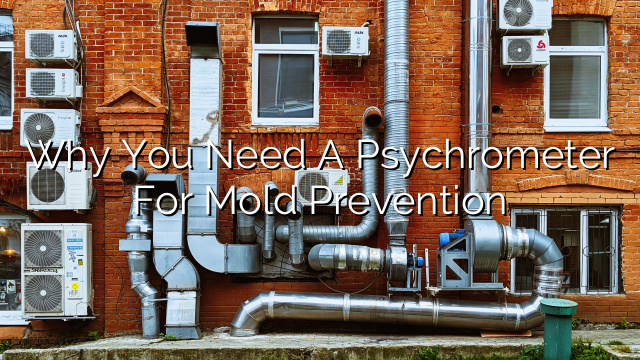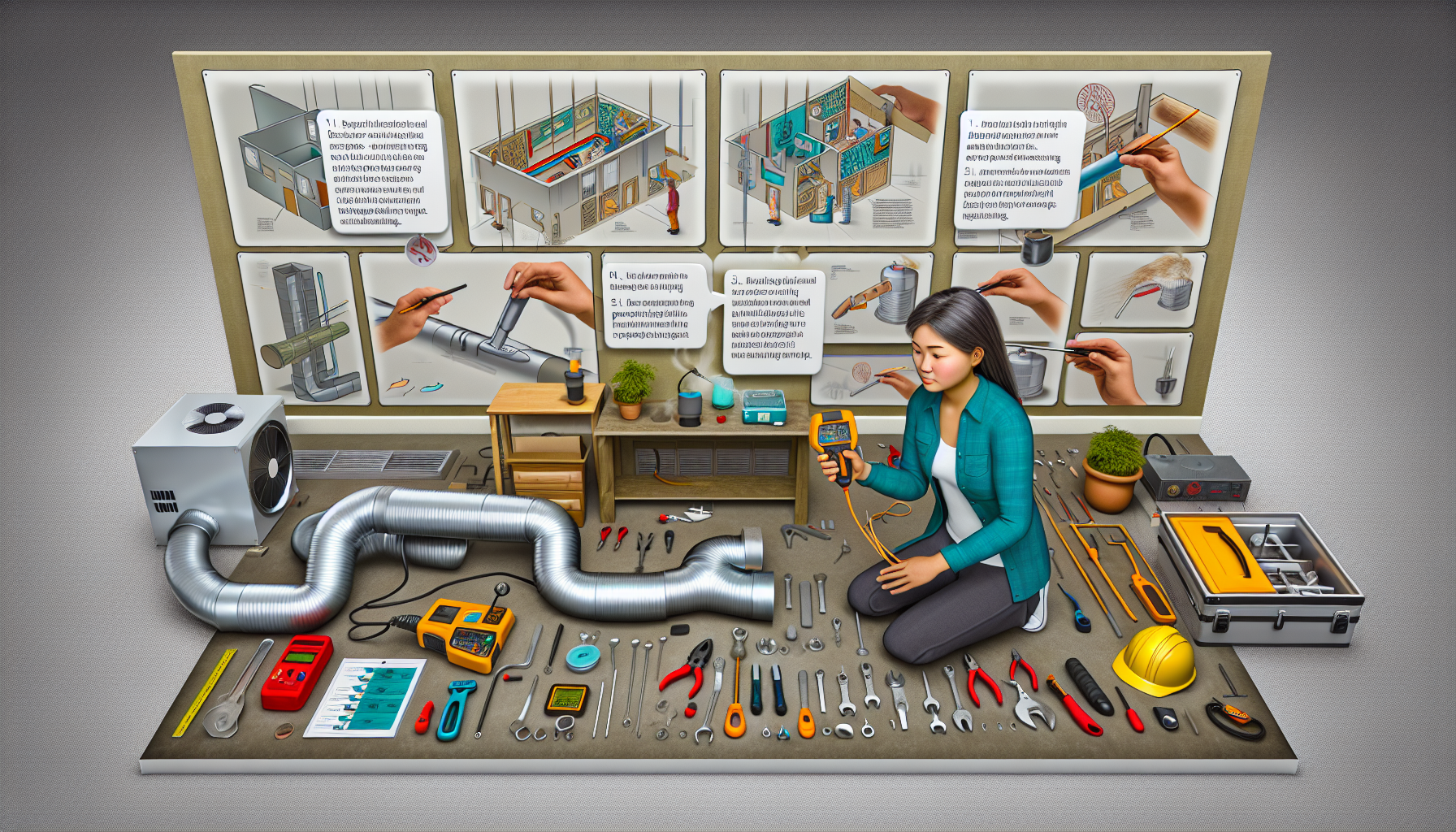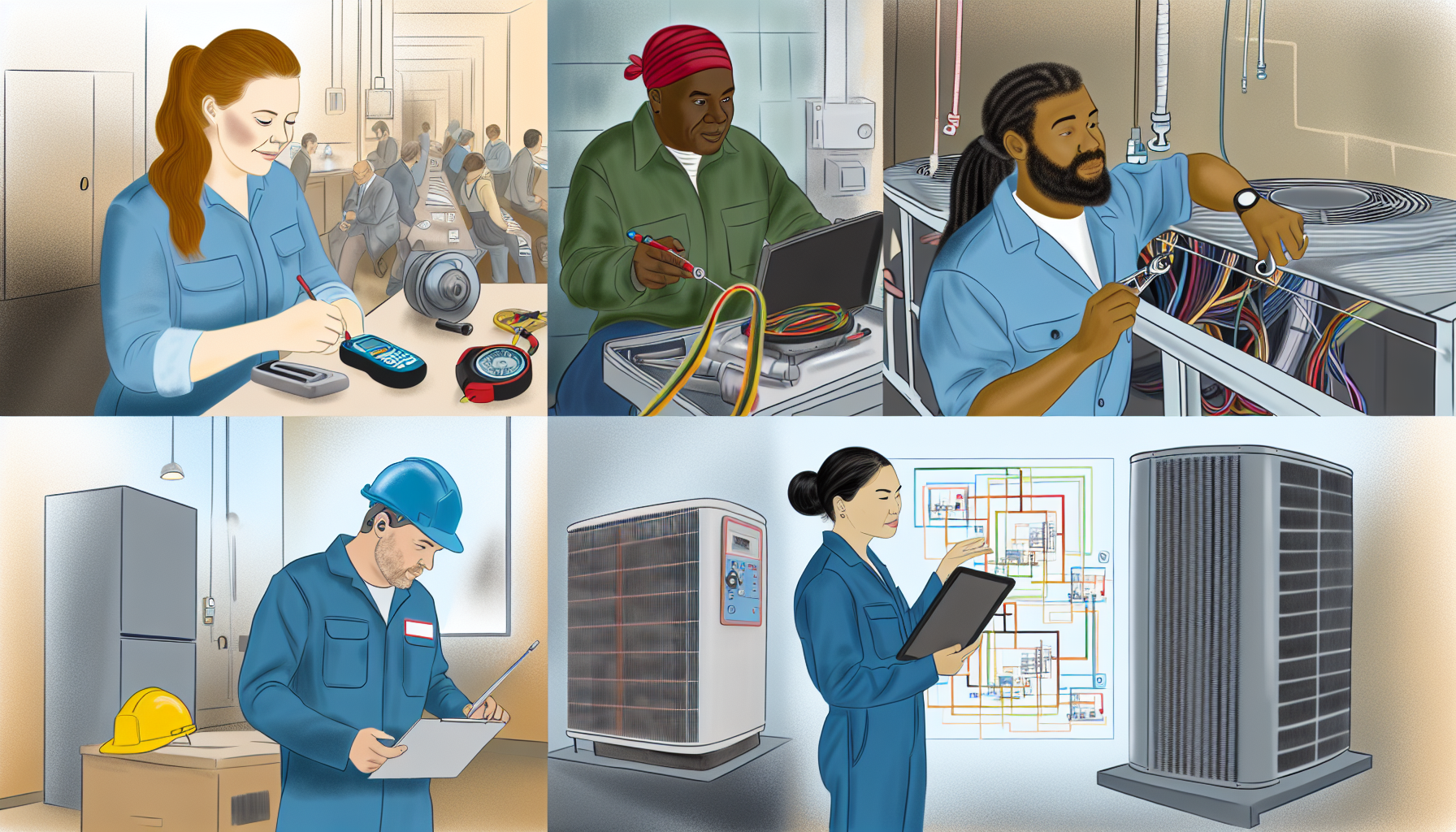Introduction
When it comes to HVAC tools, the psychrometer may not be the first thing that comes to mind. However, if you want to effectively prevent mold growth and maintain a healthy indoor environment, a psychrometer is a must-have tool. In this article, we will explore what a psychrometer is, how it works, and why it is essential for mold prevention.
What is a Psychrometer?
A psychrometer, also known as a hygrometer, is a device used to measure the humidity level in the air. It consists of two thermometers: a dry bulb thermometer and a wet bulb thermometer. By comparing the readings of these two thermometers, the psychrometer can determine the relative humidity (RH) of the air.
The dry bulb thermometer measures the ambient air temperature, while the wet bulb thermometer measures a temperature known as the wet bulb temperature. This is achieved by wrapping the bulb of the wet bulb thermometer with a wet wick or fabric. As the wet wick evaporates, it cools the thermometer, providing an indication of the humidity level.
How Does a Psychrometer Work?
When the air is saturated with moisture, the wet bulb temperature will be the same as the dry bulb temperature, indicating a relative humidity of 100%. As the air becomes drier, the evaporative cooling effect of the wet wick becomes more significant, resulting in a lower wet bulb temperature and a lower relative humidity reading. The difference between the dry bulb temperature and the wet bulb temperature is called the wet bulb depression, and it provides a measure of the moisture content of the air.
By utilizing the readings from the dry bulb and wet bulb thermometers, a psychrometric chart can be consulted to determine additional properties of the air, such as dew point temperature, enthalpy, and specific volume. These properties are crucial for HVAC professionals to assess the conditions within a space and make informed decisions about system design, performance, and maintenance.
Why is a Psychrometer Important for Mold Prevention?
Mold growth is not only unsightly but also poses potential health risks to occupants. Mold spores are present in the air both indoors and outdoors, but they need specific conditions to grow and thrive. Temperature and relative humidity play a key role in creating an environment conducive to mold growth.
With the help of a psychrometer, HVAC professionals can accurately measure the relative humidity in a space. This is important because mold growth can occur when the relative humidity exceeds 60%. By monitoring and maintaining the relative humidity below this threshold, professionals can effectively prevent mold growth and ensure a healthier indoor environment.
Furthermore, a psychrometer can help identify areas with excess moisture or high relative humidity, which are more prone to mold growth. By pinpointing these problem areas, HVAC professionals can take appropriate measures to address the underlying issues and prevent potential mold issues from escalating.
Other Uses of a Psychrometer
While mold prevention is a significant application of a psychrometer, there are several other uses for this valuable tool in the HVAC industry. Here are a few examples:
- Optimizing HVAC Systems: By accurately measuring the relative humidity, HVAC professionals can ensure that the air conditioning systems are operating at optimal levels and providing comfort to occupants.
- Moisture Detection: A psychrometer can be used to identify moisture intrusion or leaks in a building. By measuring the relative humidity in different areas, professionals can determine areas that may require further investigation.
- Humidification and Dehumidification: For applications that require precise humidity control, such as wine cellars or art galleries, a psychrometer is essential in monitoring and adjusting the humidity levels.
FAQs
- Can’t I Just Use a Digital Hygrometer?
While digital hygrometers are widely available and convenient to use, they may not provide the same accuracy as a psychrometer. The wet bulb and dry bulb thermometers in a psychrometer provide a more precise measurement of the relative humidity.
- Can I Use a Psychrometer for Outdoor Applications?
Yes, a psychrometer can be used for outdoor applications as well. Measuring the relative humidity can help identify weather conditions that may affect indoor environments, such as high humidity levels or excessive moisture.
- Do I Need to Calibrate my Psychrometer?
Yes, it is essential to calibrate your psychrometer regularly to ensure accurate readings. Calibration can be done by comparing the readings of your psychrometer with a known standard, such as a calibrated hygrometer.
- Are There Different Types of Psychrometers?
Yes, there are different types of psychrometers available, including sling psychrometers, electronic psychrometers, and digital psychrometers. The type of psychrometer you choose will depend on your specific needs and preferences.
- Can I Use a Psychrometer for HVAC Troubleshooting?
Yes, a psychrometer can be a valuable tool for HVAC troubleshooting. By measuring and comparing the relative humidity in different areas, HVAC professionals can identify potential issues and make informed decisions about system repairs or adjustments.








